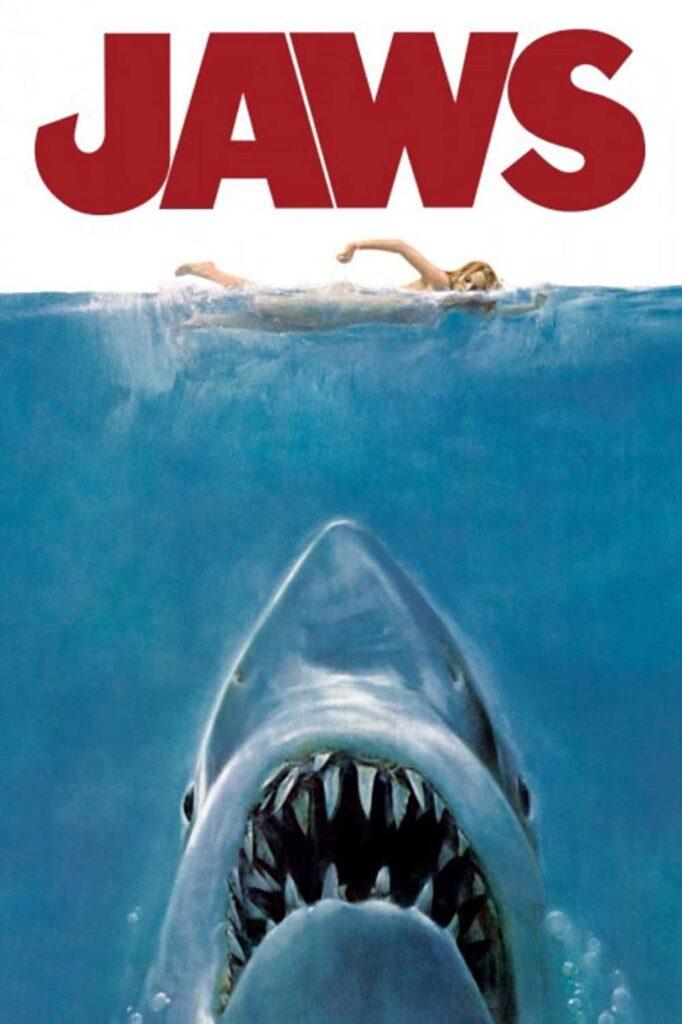The IMAX and 3-D re-release of Steven Spielberg’s iconic thriller “Jaws” during the 2022 Labor Day weekend is a reminder of a bygone moviemaking era when craftsmanship took precedence over profits — a period that “Jaws,” ironically, helped end.
Originally released on June 20, 1975, “Jaws” was the second feature film from then-obscure director Spielberg. The film’s story revolves around Amity Island, a tranquil New England beach hamlet that suddenly finds itself terrorized by a man-eating great white shark. After several brutal deaths, the island’s aquaphobic police chief Martin Brody (Roy Scheider) joins forces with young oceanographer Matt Hooper (Richard Dreyfuss) and scruffy shark hunter Quint (Robert Shaw) to kill the shark.
The release of “Jaws” was a watershed moment in the history of action-adventure movies due to its flawless filmmaking craft in every imaginable category.
“Jaws” makes brilliant use of push-in shots, skillful red herrings and composer John Williams’ famously ominous music to build suspense. The shark itself is almost never shown until the final act, as Spielberg instead uses floating barrels, swiftly moving driftwood and tipped rowboats as foreboding omens of the beast’s presence. By keeping his monster hidden, Spielberg allows his viewers’ imaginations to run wild about what lurks beneath the water surface, striking fear into their hearts.
“Jaws” also puts sincere effort into a vital cinematic element that many modern thrillers neglect: character development. Shaw makes Quint a fascinating, three-dimensional character by juxtaposing crass grins and boisterous singing with world-weary monologues and intimidating grimaces.
Additionally, Scheider’s mild-mannered, uptight depiction of Chief Martin Brody serves as the perfect foil to Quint’s larger-than-life charisma. Brody’s transformation from a man afraid to dip one toe in the ocean into a battle-hardened, fiercely determined hero encourages the audience to root for him. Brody represents the human spirit’s resilient ability to conquer fear even in the face of mortal danger.
The technical success of Spielberg’s film is matched only by its unprecedented commercial accomplishments.
Before the arrival of “Jaws,” summertime was not considered fertile ground to reap cinematic profits. Most big-budget films were released during the winter, while summer served as a dumping ground for projects studios deemed unimportant.
But starting in the late 1960s, summertime widescreen releases like “American Graffiti” began to draw droves of people — especially teenagers enjoying time off from school — to theaters. The producers of “Jaws” saw an opportunity to take advantage of this budding trend and devised one of the first television marketing campaigns in cinematic history. Universal Studios spent a whopping $1.8 million to advertise the film, dropping a record number of brief trailers on major TV networks to pique the public’s interest in the days leading up to the film’s initial release.
The response was dramatic.
The film, which cost roughly $9 million to make, would go on to gross $260 million in the United States alone, surpassing records set by previous blockbusters like 1972’s “The Godfather” and 1973’s “The Exorcist.”
The film was released in 465 theaters nationwide — unheard of for the time — allowing the masses to congregate for a suspenseful summer treat. “Jaws” became a nationwide phenomenon and helped create the summer movie season.
After the film’s release, studios began to market movies differently. Hollywood realized that movies, if cleverly advertised and widely released, could generate absurd amounts of money, perhaps even regardless of quality.
Today, studios are willing to produce poorly made, contrived action films because they know that audience members will respond with open wallets. Hollywood has noticed that audiences crave nostalgia and explosion-driven spectacle enough to ignore the distractingly messy CGI, thinly written characters, and laughably inept dialogue that plague many action franchises.
Yet hope is on the horizon. Some studios are beginning to produce authentic, well-crafted action blockbusters like “Dune,” “The Batman,” “Elvis,” and “Top Gun: Maverick.” Audiences have flocked to theaters each time, with the films’ critical achievements correlating positively with attendance.
Perhaps studios will soon realize that they can take risks on original blockbuster concepts like “Jaws,” rather than lazy sequels and retreads, and still generate profit. After all, Steven Spielberg is the most commercially successful director of all time, and he did not sacrifice the quality of his craft to get there.








